The Xtreme Signal HDB91X antenna from Solid Signal is a great combination of durability and performance. It’s the right antenna for you if you:
- Need an outdoor antenna for good reception
- Live more than 50 miles away from the broadcast towers
- Watch primarily UHF channels
- Live where there is no homeowner association or any rule against a larger antenna
- Are comfortable mounting an antenna on a mast
If that sounds like you, there’s no doubt you’ll enjoy great FREE HDTV by using this durable, economical antenna.
How do I know if I need only UHF channels?
A site like TVFool.com will help you figure out the actual broadcast channels you need. Remember, since the digital transition, broadcasters use the PSIP system to translate between actual channel numbers and the channel numbers you see. Anything over channel 12 is considered UHF.
Before you start:
Make sure that you review local ordinances for grounding and buy the grounding supplies you need. Also, make sure your ladder is safe and don’t go up on a roof or into an attic if there is any chance of electricity. Be safe!
Also, remember that all assembly should be done by hand. It should not be necessary to use tools to tighten anything more than hand tight (except in one case where a 10mm wrench is needed) and if you overtighten the nuts you may risk damage to the antenna.
This document is available in PDF format! Click here to download!
What’s in the box
Here’s what you should expect to see in the box:
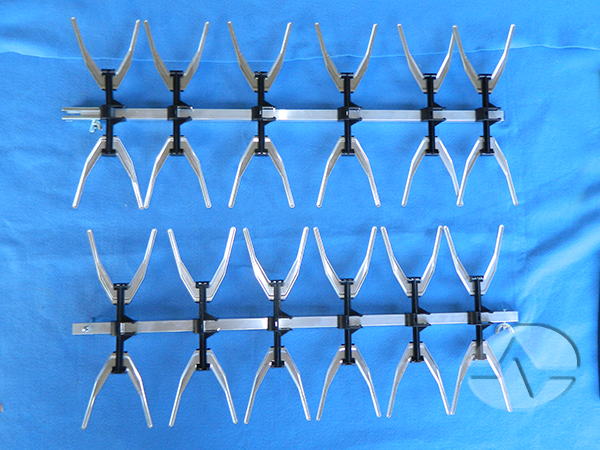
Two segments with widely spaced elements.
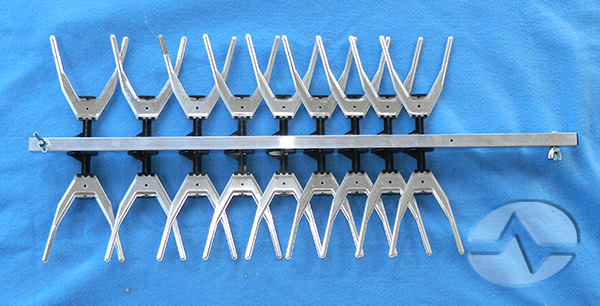
One segment with narrowly spaced elements.
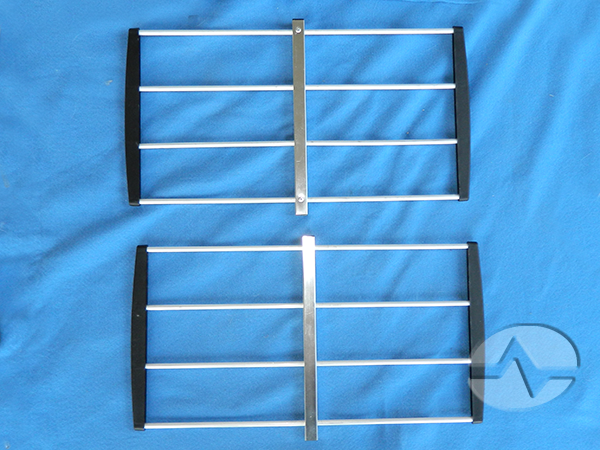
Two reflectors.
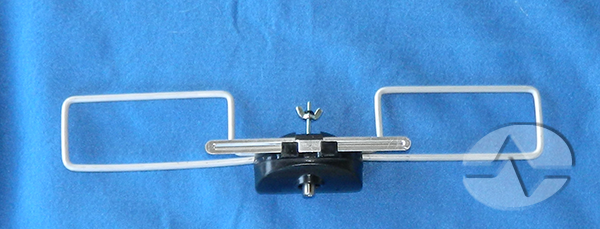
Dipole antenna assembly.

Mount with cable clamp.
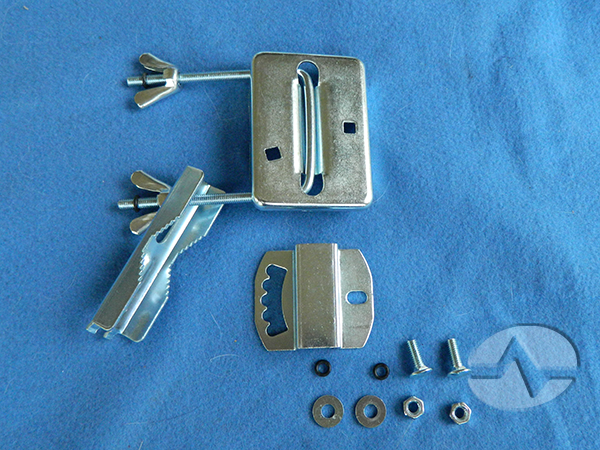
Mast bracket (shown here disassembled)
There is also a bag of assorted clamps and the instruction guide, with one rubber boot.
Before you start
This antenna has a lot of parts and assembly will take you 10-15 minutes even if you are an experienced technician. Here are some tips to make things go more quickly:
Keep everything pointing and facing the same way: While it doesn’t make a lot of difference which end is up when you’re all done, you’ll find that assembling the antenna goes a lot faster if you make sure the front of all the elements faces the same way, and the tops are all on top.
Don’t overtighten. The antenna is made of aluminum and will dent or tear if pressed too hard.
Careful with the elements. Always hold the antenna by the aluminum tubing and not by the elements, which are prone to bending. If you do accidentally bend an element, it can be gently bent back into place.
A second person isn’t a bad idea. There are times where an extra pair of hands will help the job go more smoothly.
Opening the elements
The X-shaped elements ship folded down. Every one must be folded to a perpendicular position before you continue.

Looking at the folded elements there is a plastic crossmember. That is the strongest part of the element and is the only area where you should put pressure.
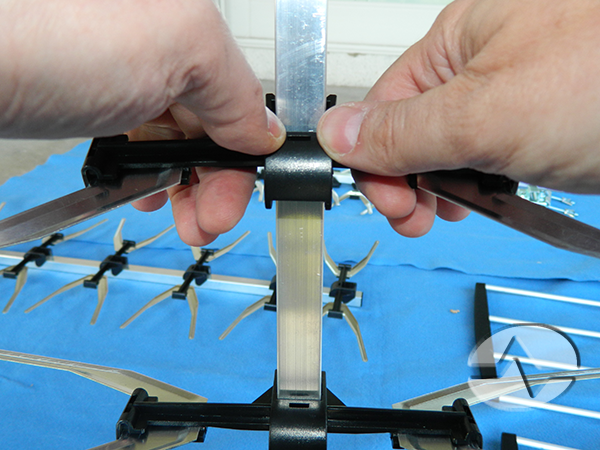
The goal it to gently rotate the elements so the plastic clips on the side of the aluminum tubing snap into place. Take a minute or two to figure out the best method for you. One way is to place the antenna secment so the plastic clips are pointing to the top, then gently rotate the element away from you until it snaps into place.
As long as you are gentle and handle the elements by the center, there’s no bad way to do this. You may find a technique that works better for you.
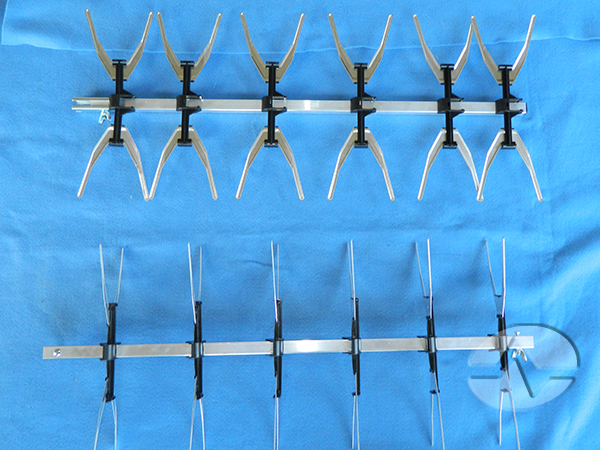
This image shows one of the segments before and after putting the elements in position.

When you are done all the segments should look like this. It’s a good idea to get them ready by facing them all the same way and making sure the same side is up on all three segments.
Assembling the antenna segments
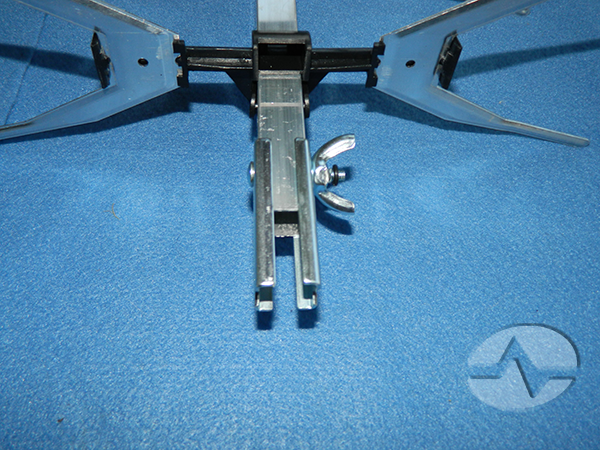
The antenna segments are attached with brackets and wingnuts. These brackets may be already attached or they may be in the parts bag. If they are attached, start by loosening the wingnuts attached to the brackets to allow the bracket to spread wide.
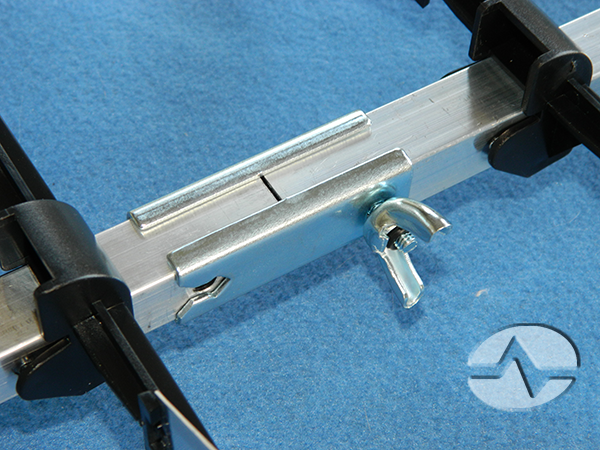
The bracket can be slid over the segments even with the wingnuts attached, but here one of the wingnuts has been removed to show the bracket more clearly. Notice that on both segments, the antenna elements are facing the same way. Also, the pre-drilled holes should make it easy to tell what attaches to what. The two widely spaced segments go together, with the tightly spaced segment on the end.
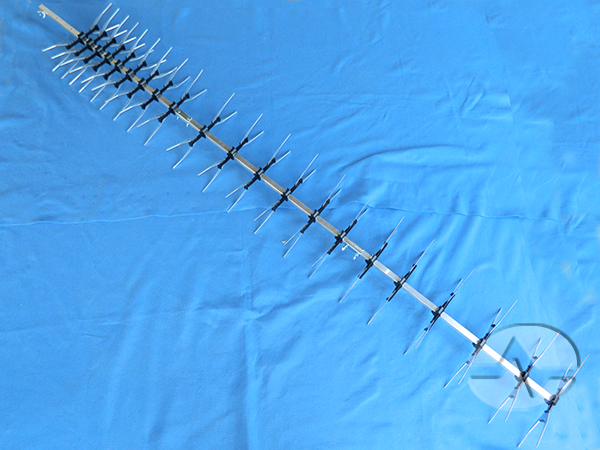
When all the segments are attached you will have a long antenna section that looks like this. Notice that the tightly spaced elements are at the end and not in the middle.
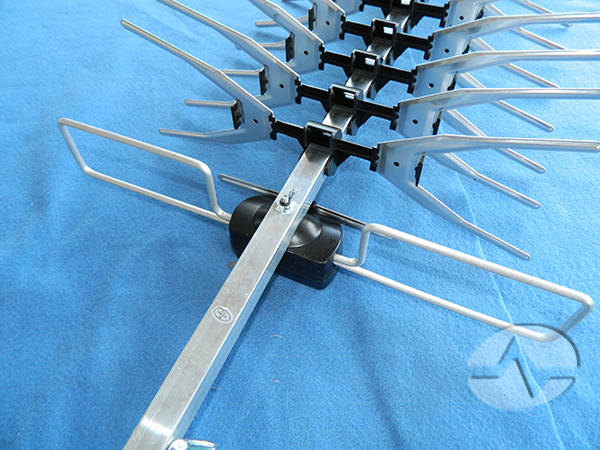
Next, attach the dipole. It goes on the side with the tightly spaced elements. There is a horizontal metal bar about the size of a popsicle stick. That should be facing the elements and the coaxial connection on the dipole should be facing down. Attach the dipole from underneath and secure it with a wingnut.
Attaching the reflectors
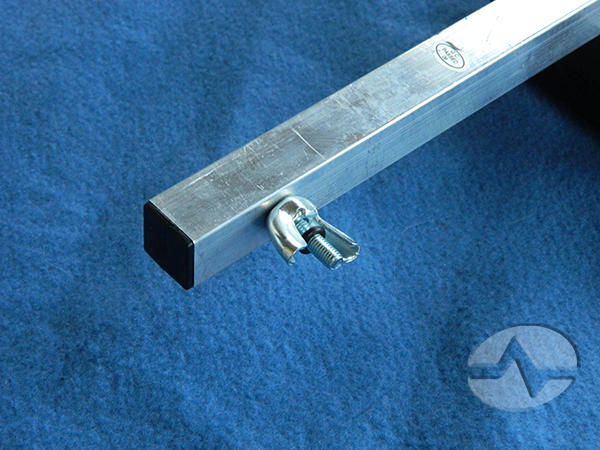
The back end of the antenna (where the elements are most tightly spaced) has a wingnut and bolt. Remove this and set it aside.
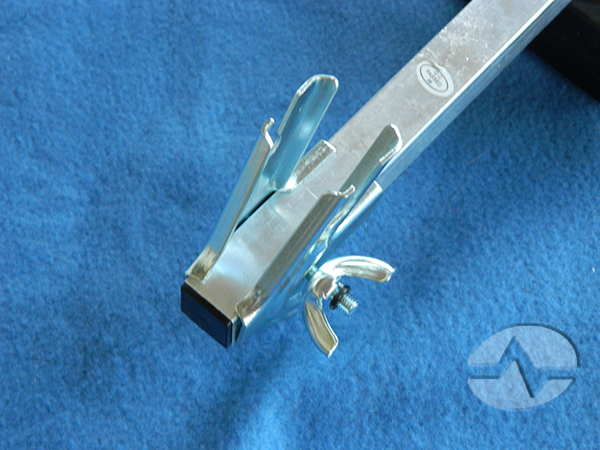
Place the reflector brackets on either side of the antenna and connect the bolt and wingnut, leaving it loose.
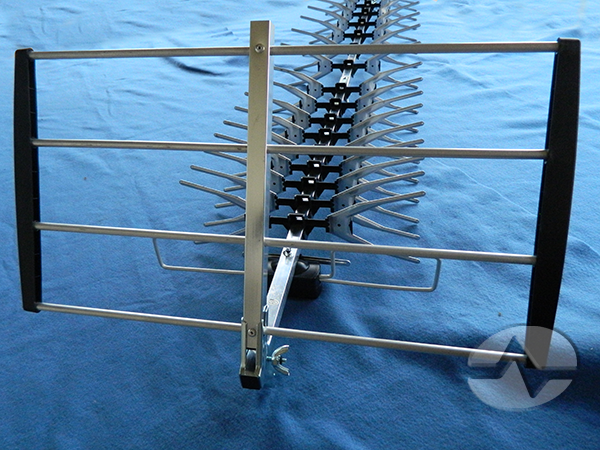
It should now be possible to slide the reflectors into the top and bottom of the bracket with gentle pressure. Do not push too hard. When both reflectors are in place, tighten the wingnut.
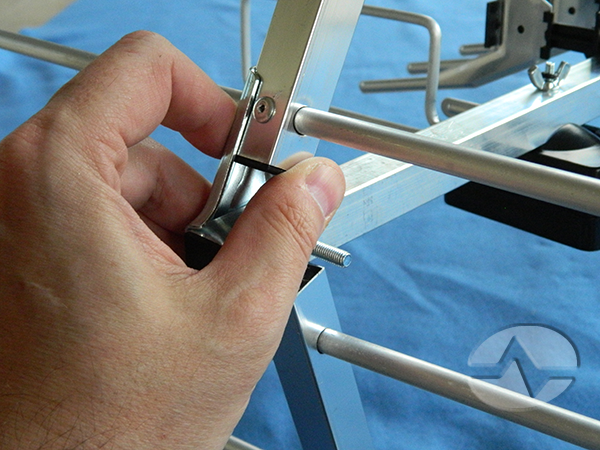
If you’re having problems attaching the reflectors, you may have better luck putting only one reflector bracket on, seating both reflectors, then attaching the other bracket. It helps to have a second person if you’re doing it this way.

When the reflector is assembled the antenna will look like this. Note that the reflectors are not designed to bear weight.
Attaching the mount and mast bracket
The mount uses the same connection system as the rest of the antenna but the brackets only have one set of holes. This lets you attach the mount anywhere on the antenna for proper balancing.
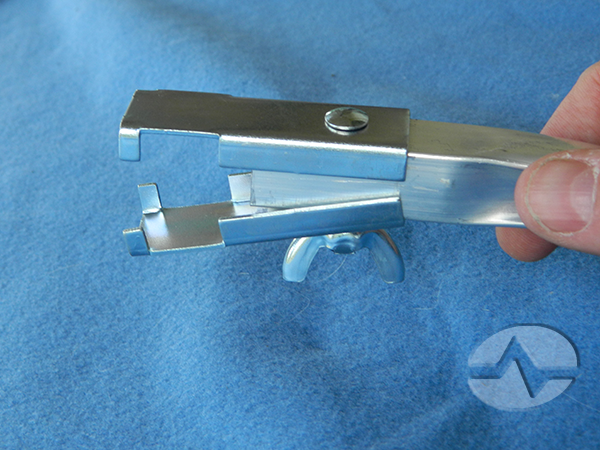
Start by loosening the wingnuts so the bracket can fit around the antenna.
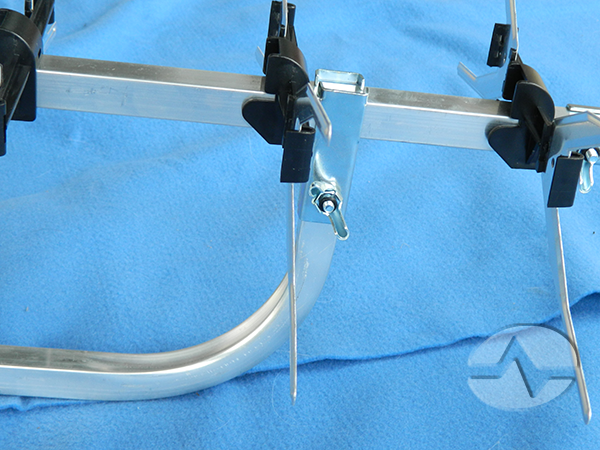
Slide the brackets over the antenna and tighten the wingnut. The plastic cable clip should be toward the back.
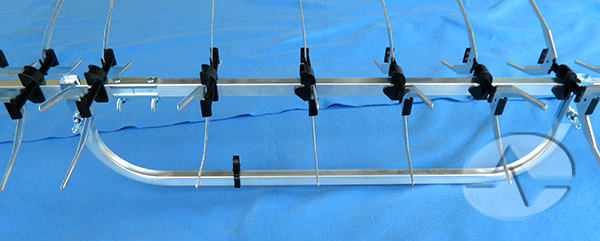
The finished mount looks like this.

Now, disassemble the mast bracket if it is pre-assembled, as shown.
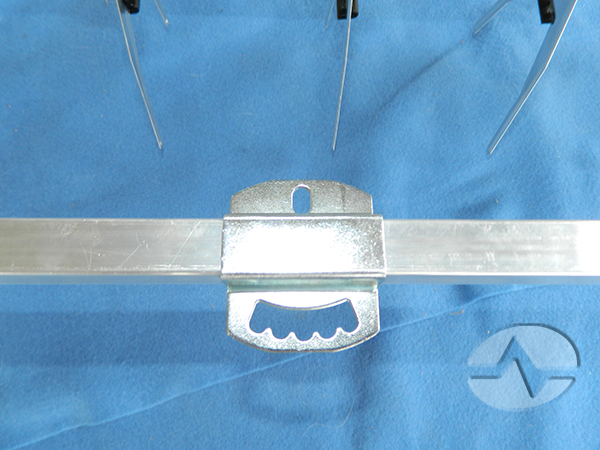
Put this part of the bracket on the mount. It mounts sideways. Note at the top of the photo you see the bottom of the antenna. This is to allow it to properly mount to the mast.
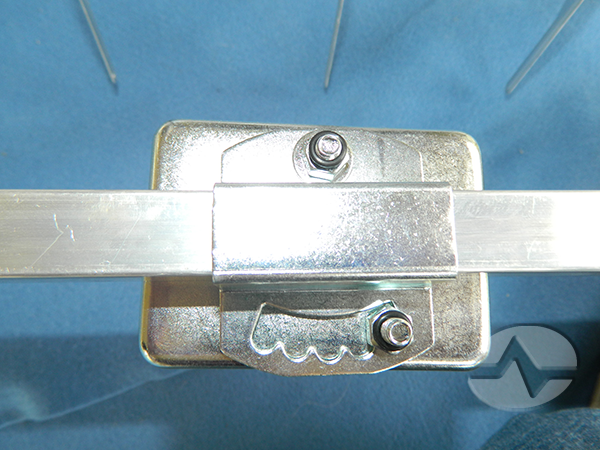
Securely attach the bolts as shown and tighten with a wrench. The mast bracket can be set to compensate for a mast that isn’t plumb by tilting it before tightening the nuts.
Now that the antenna is completely assembled, go back and check that all wingnuts are nice and tight. Lift the antenna and support it using only the mount (a second person can help here) and see if there is any sagging due to loose connections. Also make sure that every bolt has a rubber gasket on the end, which will provide some protection in case the wingnuts get loose
Remember not to overtighten. Other than tightening the mast bracket, no tools should be necessary.
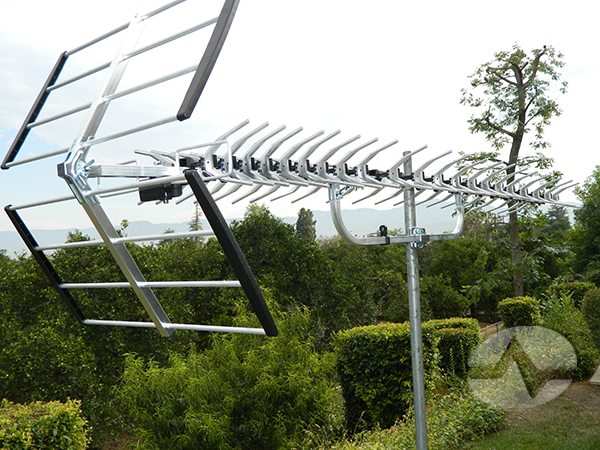
Mount the antenna on a mast by sliding the mast mount over the mast and tightening the clamps onto the mast. Attach your antenna cable to the bottom of the antenna, using the supplied weatherproof boot to shield the connection. The cable can run through the plastic cable clamp on the mount.
Find a convenient location for a grounding block and attach the antenna cable to it. Run the cable from the grounding block into the house.
Finally, use your TV’s menu to scan for off-air channels.





